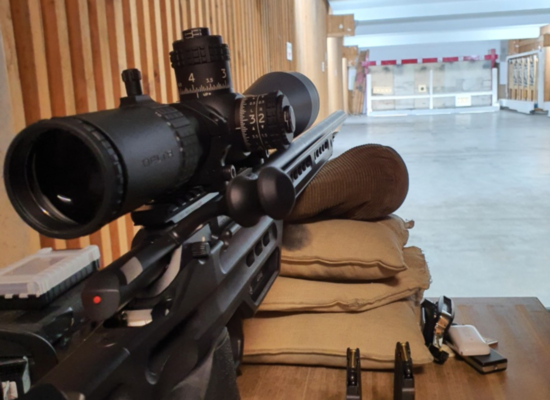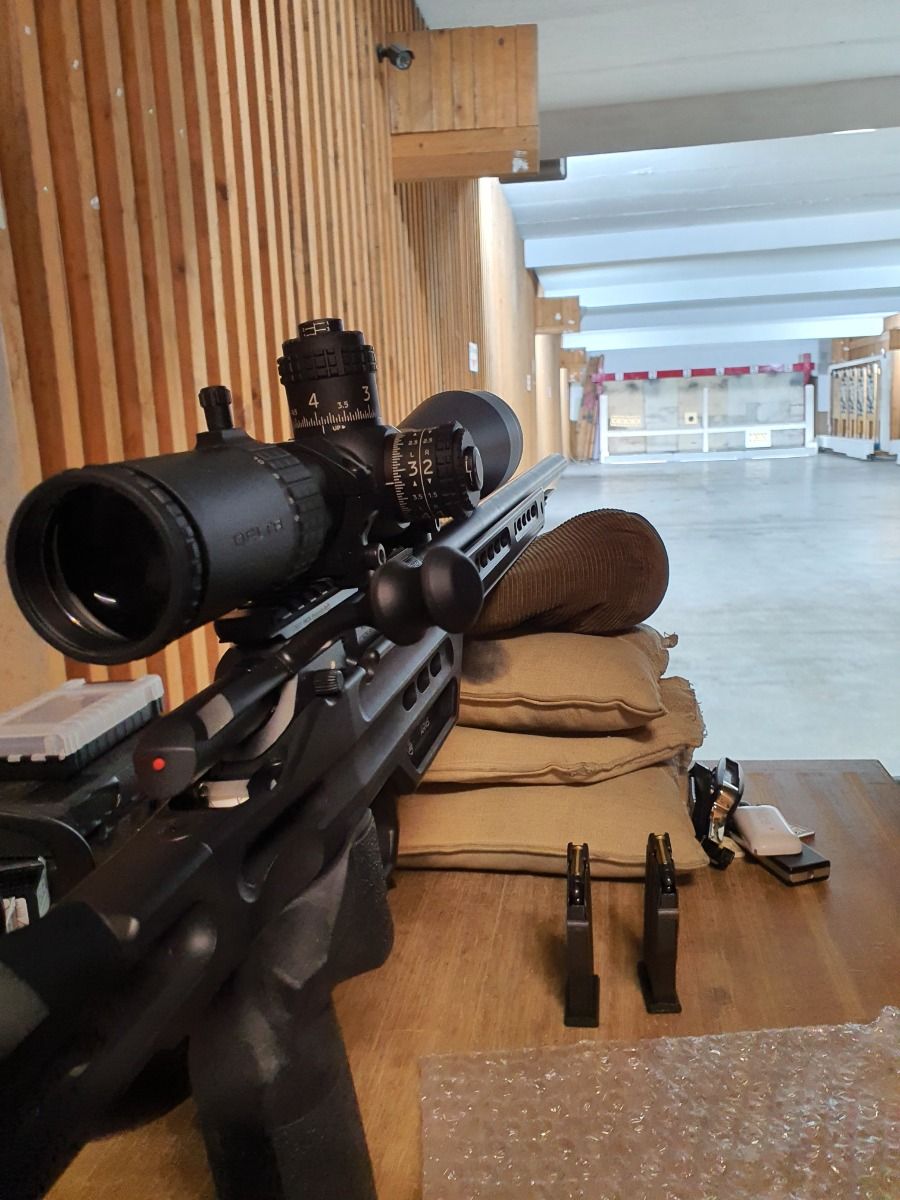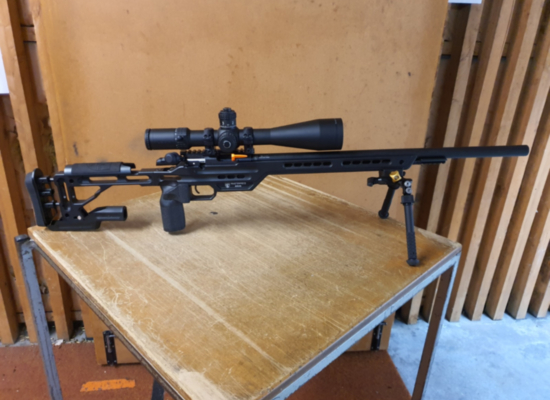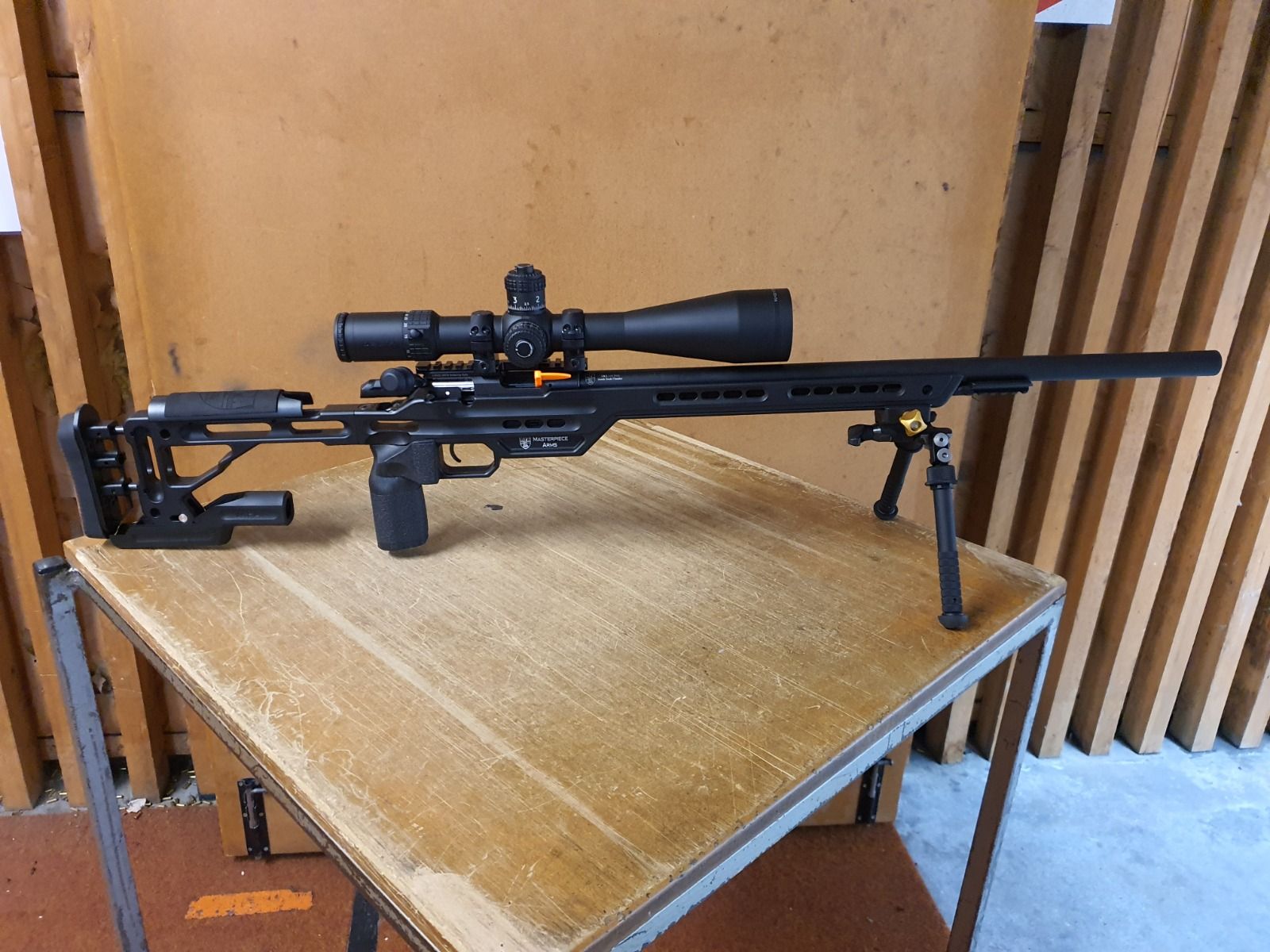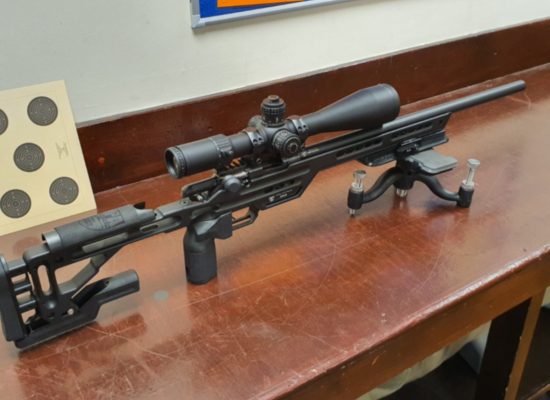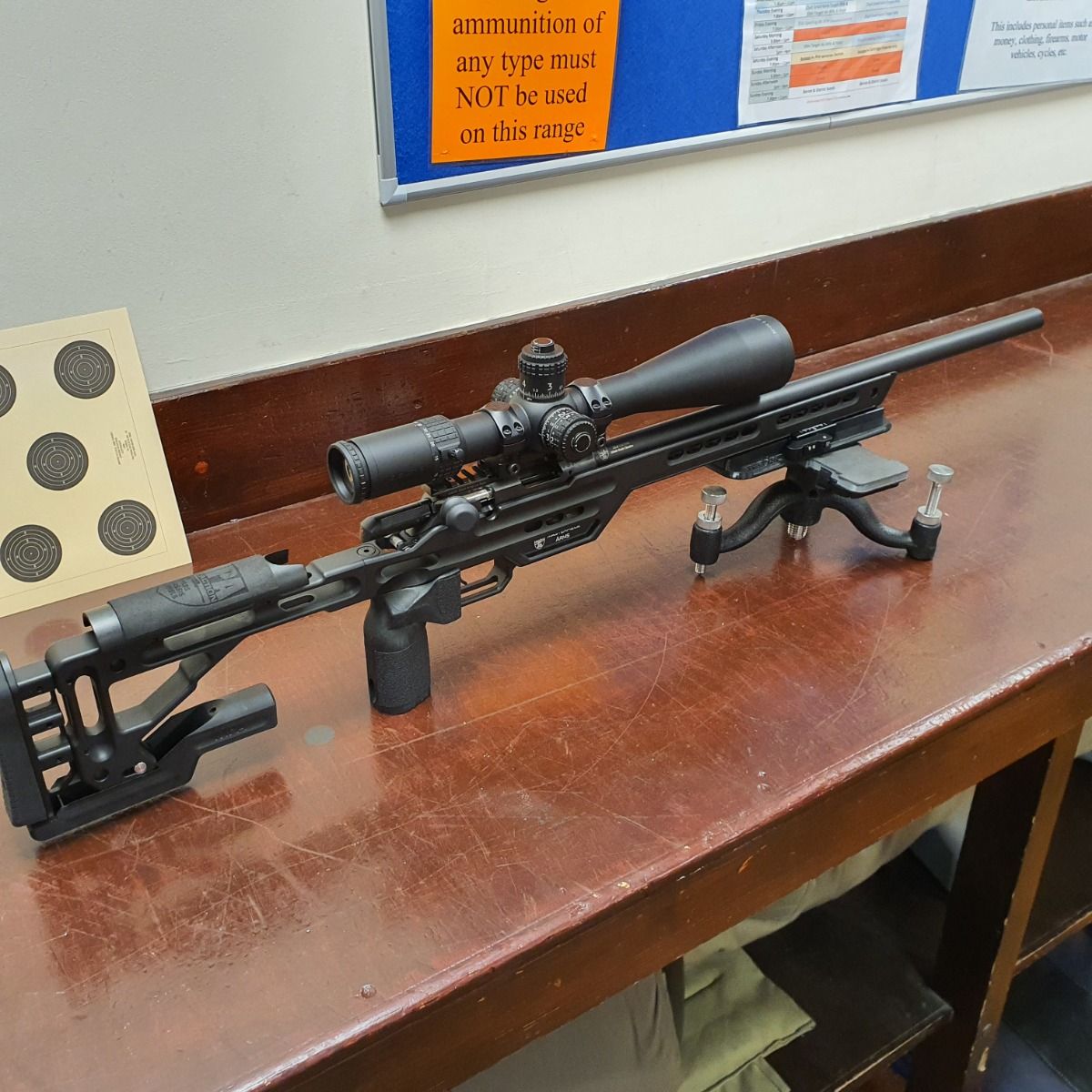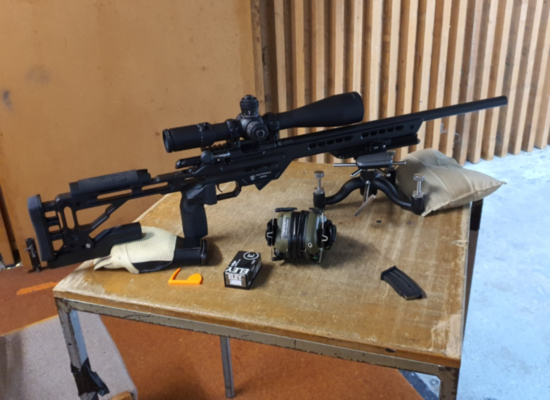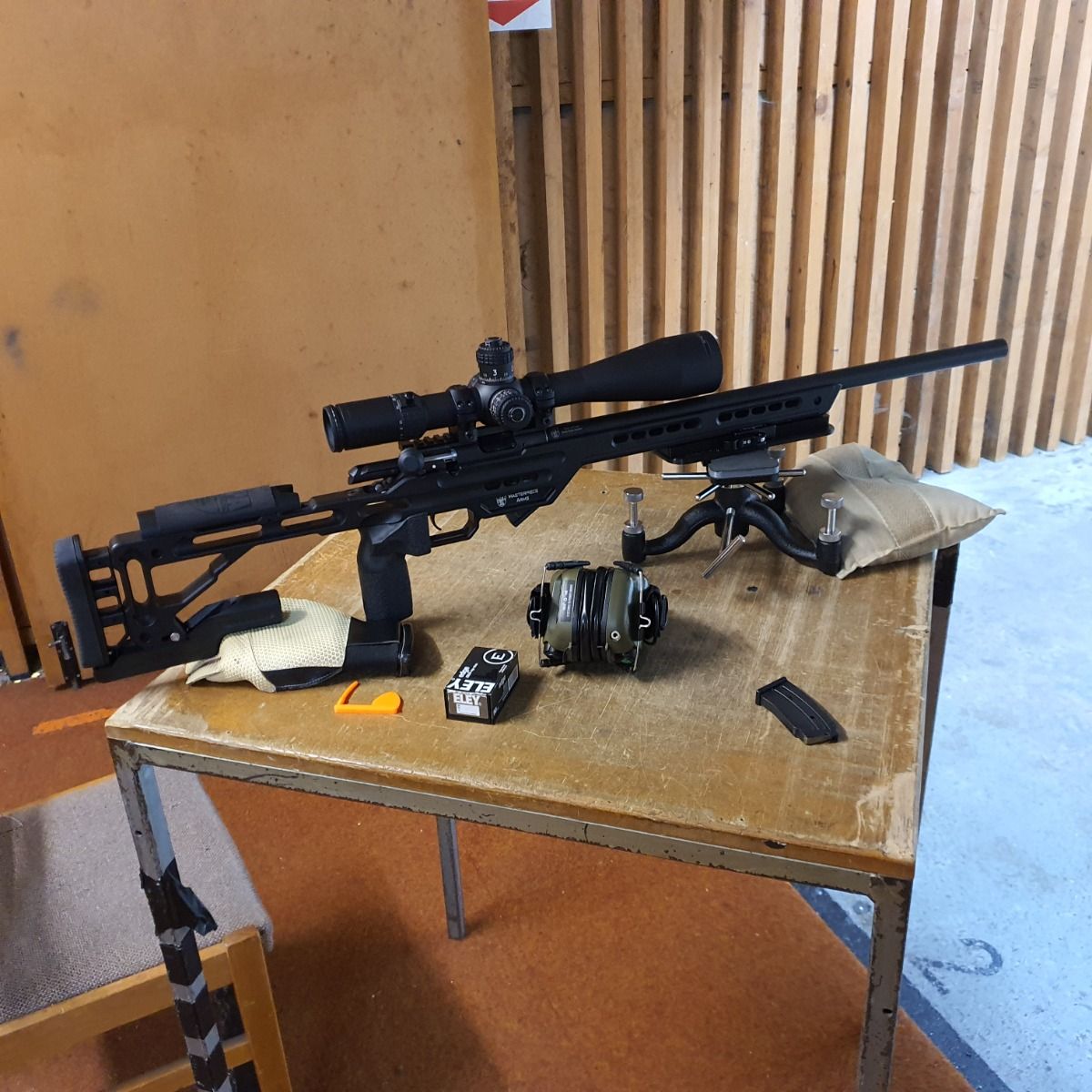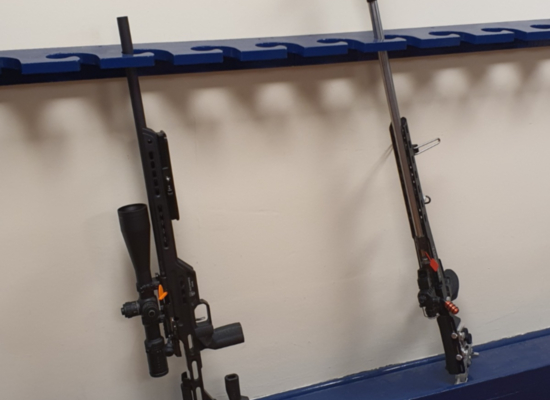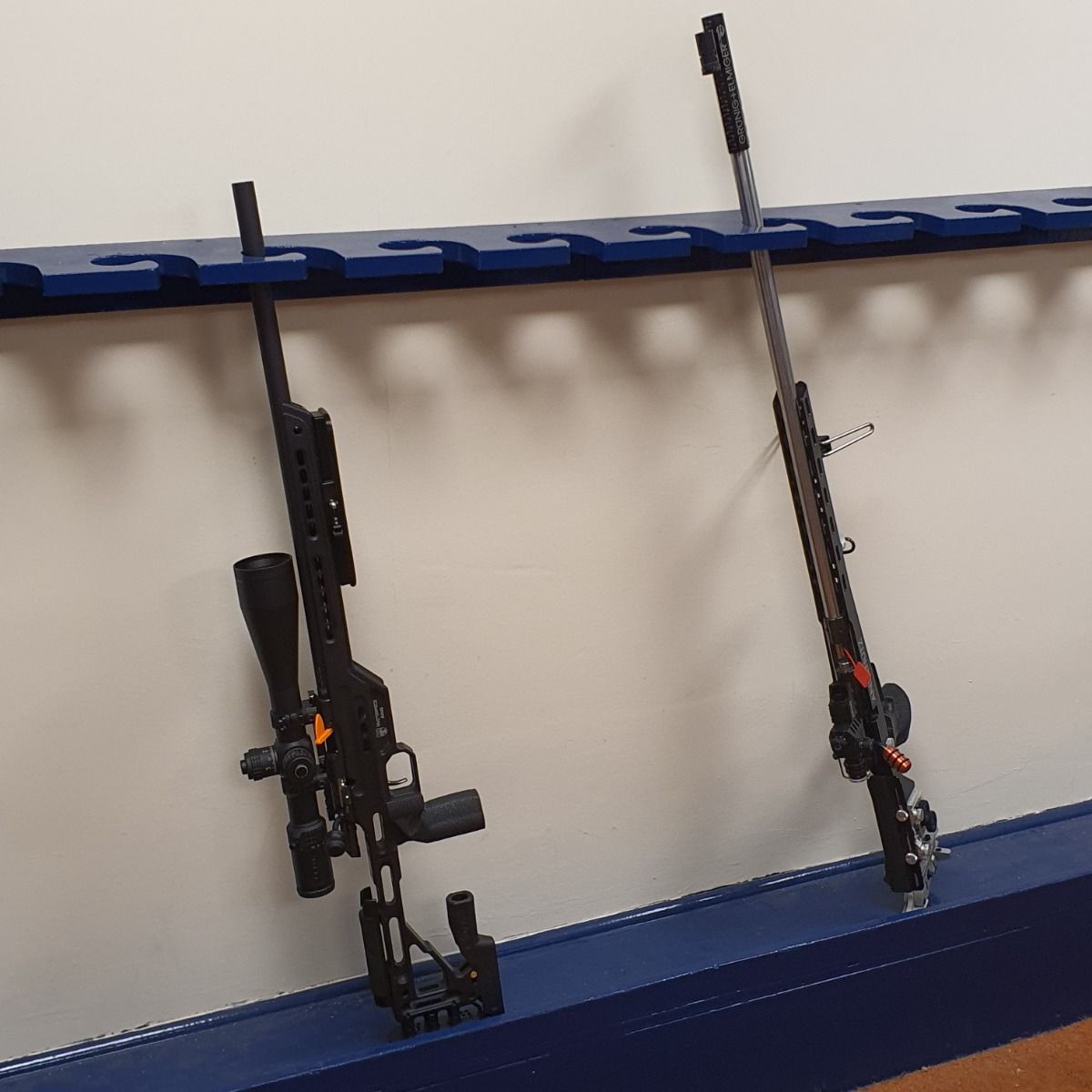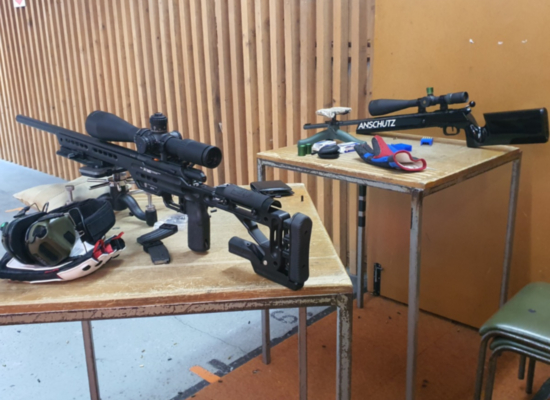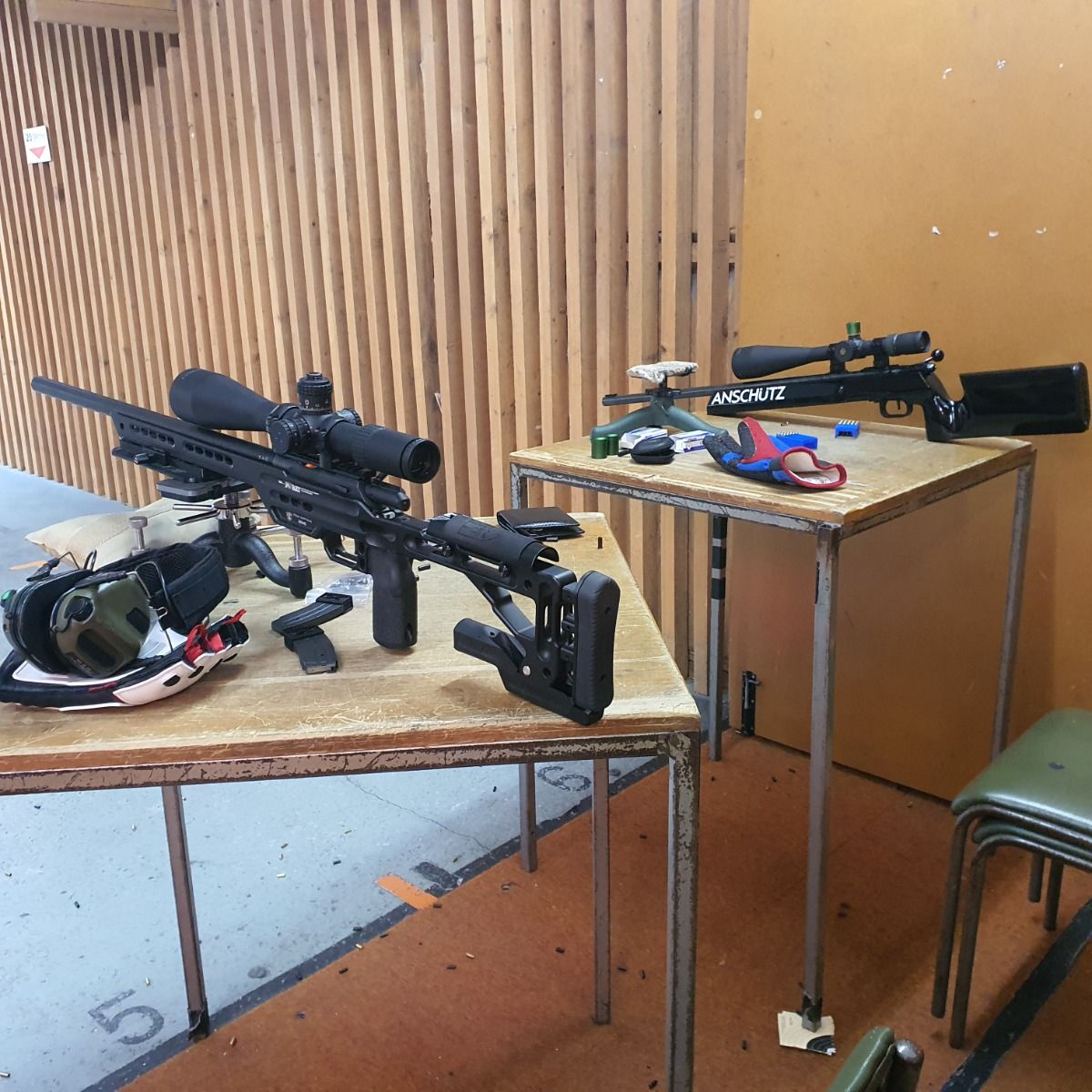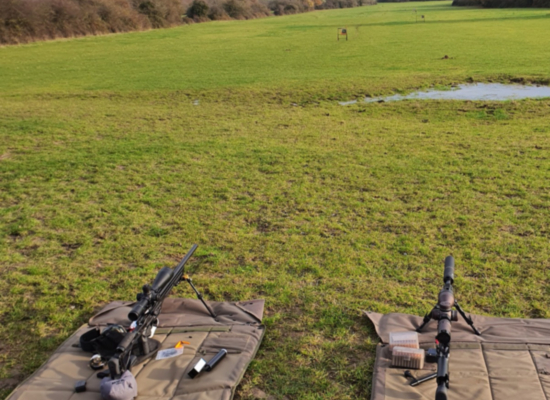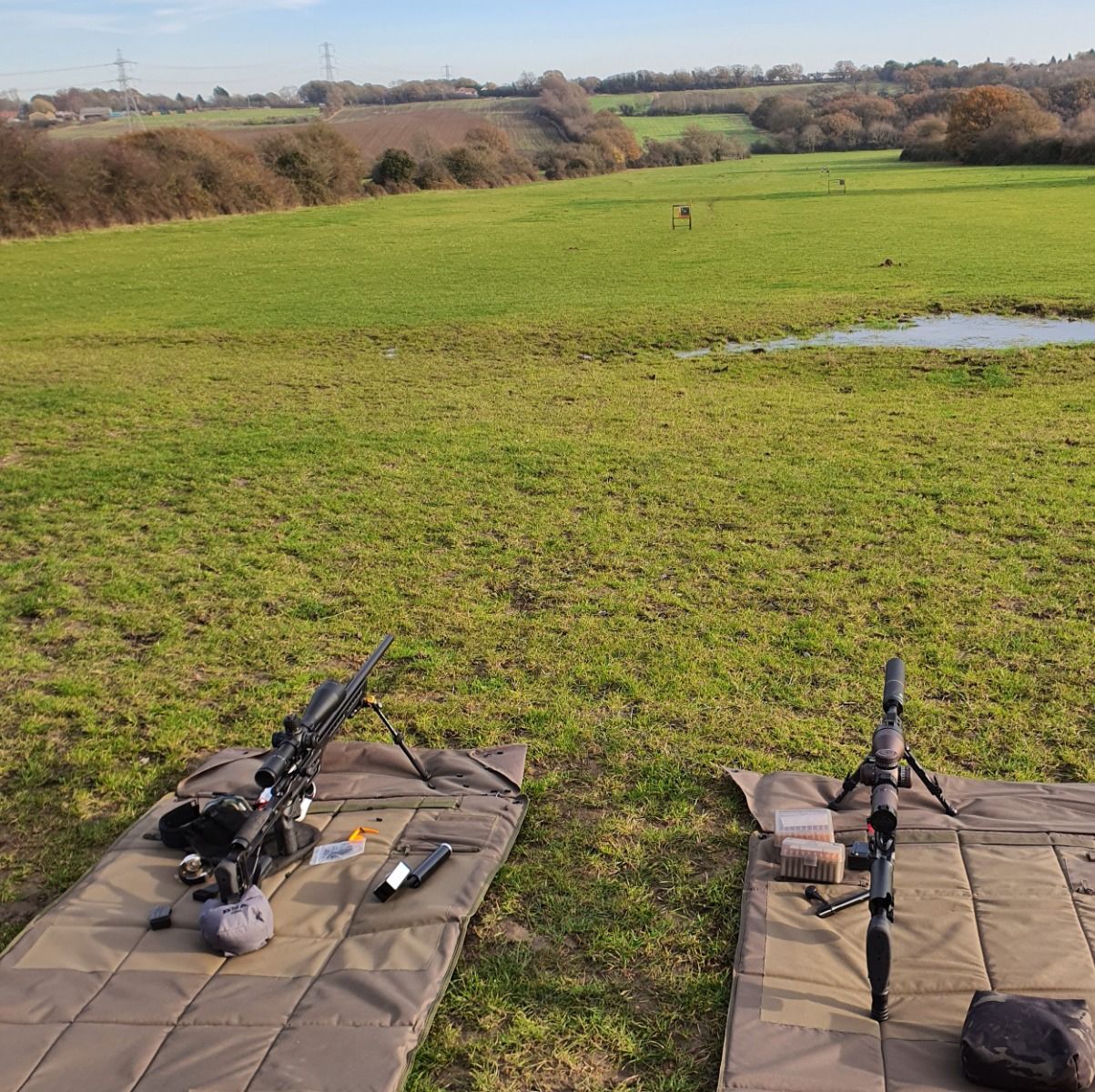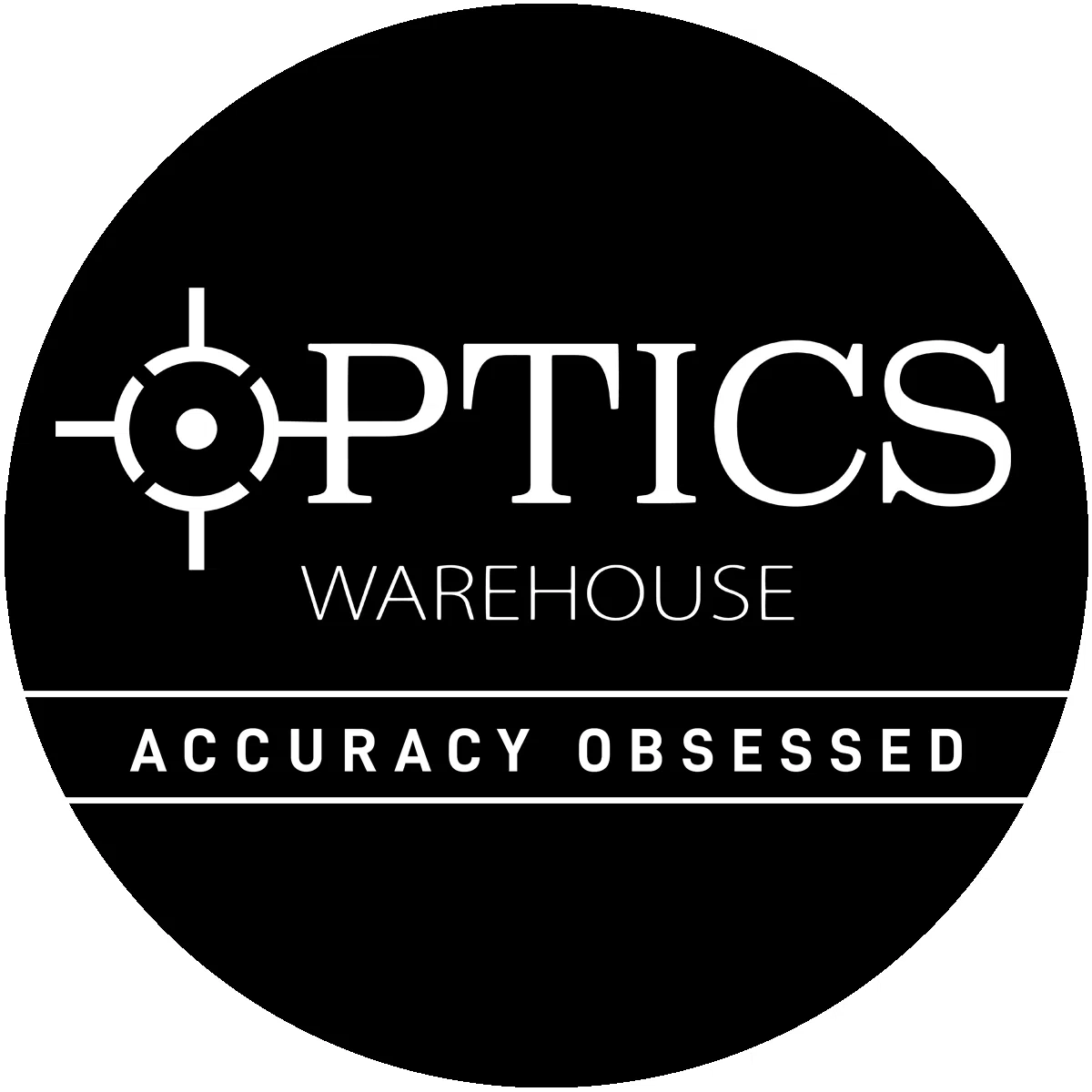
Guest writer, Max Gale, provides an in-depth review of the Delta Stryker Target Ultra ED 5-50x56 HD SFP, as well as sharing his thoughts on why sometimes it's worth spending a little more on your next Rifle Scope.
For advice or help about any of the products featured in this blog, please call us on 01803 611895.
Disclaimer: Words are by that of the guest writer, and are not by that of Optics Warehouse. Prices stated are that of the time of writing and may be subject to change.
...
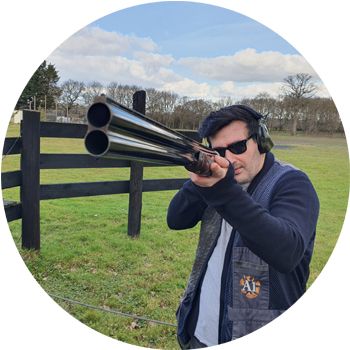
[Words and images courtesy of Max Gale]
In a market flooded with scopes packed full of features, it seems to be becoming harder and harder to actually make up your mind and pick a new scope from the ever-growing list of options out there. For those of you struggling with this, I would like to put forward the Delta Stryker Target Ultra ED 5-50x56 as one of the best Scopes for the money available despite its fairly expensive price tag. I also hope to make your whole Scope buying process a bit simpler by sharing some insights I have learned over my years of shooting before buying my Delta. With a little luck, I may convince you to save up that bit longer and invest in a more expensive Optic for your Rifle.
As for where my experience lies, I am approaching this from the position of a .22LR shooter wanting to get into competition shooting and wanting to achieve a very high level of accuracy, but this will of course apply to any .22lr shooting and any larger calibre rifles too. If your goal is short-range courses, plinking with an Air Rifle, Hunting, or something that does not require this level of accuracy and detail then by all means look for a scope that fits the intended role. I don't think anyone wants to smash up their expensive and heavy target scope by climbing a fence, undertaking some pest control.
First a bit about the scope...
My version of the Delta Stryker is the Target Ultra ED. A 5-50x56 HD, Second Focal Plane (SFP), illuminated, DLS-1 reticle, 0.05 MRAD adjustment, Zero Locking Rifle Scope and has a 34mm tube. There are 2 other reticles available in SFP, DLS-2 and DLS-3 although the DLS-3 adjusts by 1/8 MOA clicks instead, and all come with a 10 year warranty. I went with the Second Focal Plane option as this was for my Benchrest rig and that style of scope is better suited to Target shooting. This is because with an SFP scope the reticle doesn't change size as you zoom in like with an FFP, meaning the centre X of your target will not get obscured by the crosshairs even on full magnification. For those of you shooting NRL22UK style matches or full bore competitions where you need to be changing distances every few shots, and calculating holdover at different distances then Delta also has a First Focal Plane version available too. Weighing just over 1kg, making it a bit heavy to recommend for carrying around as a workhorse Hunting scope, but when you need to place your rifle on a barricade with a bag or you are prone with a bipod, having that extra weight can really help keep your rifle stable. I feel it’s a fairly premium-priced optic for your average buyer at around £1600 but for that price it delivers performance well above its cost. The glass quality, overall build quality and turret accuracy with 100 MOA of adjustment makes it feel like you are getting exceptional value for your money.
This should definitely be a scope on the list of options for anyone looking for a new optic or indeed the FFP versions instead. It sits very comfortably at the lower end of the expensive scope market in terms of price but ends up far outshining the other options at the £800-1300 mark that you may be looking at. You will have to think about spending £2300 or considerably more to find something better than the Delta Stryker.
Of course, there are scopes that will have better glass than the Delta. It uses very high-quality Japanese glass and not German, but German glass comes with a much higher price tag for a much smaller return on quality improvements for the spend. So despite it being expensive you're definitely looking at the best bang-for-your-buck in the £1000- 2200 price range. If you stretch to £2300 and up there are of course some lovely options out there.
Sometimes it doesn't hurt to take a step back and think long term for a second when buying a new scope. The £600 (give or take) you might be about to spend on an average scope could be looked at as just £600 you could have put towards a really good scope that will never need replacing and will do everything you want perfectly. Optics Warehouse offers finance on most scope models and brands so there is a way to spread the cost to make it manageable, or keep it simple and just stick with what you have for those extra months while you save up. Then dive in with a more expensive scope and learn and improve with it, I promise you won't regret it!
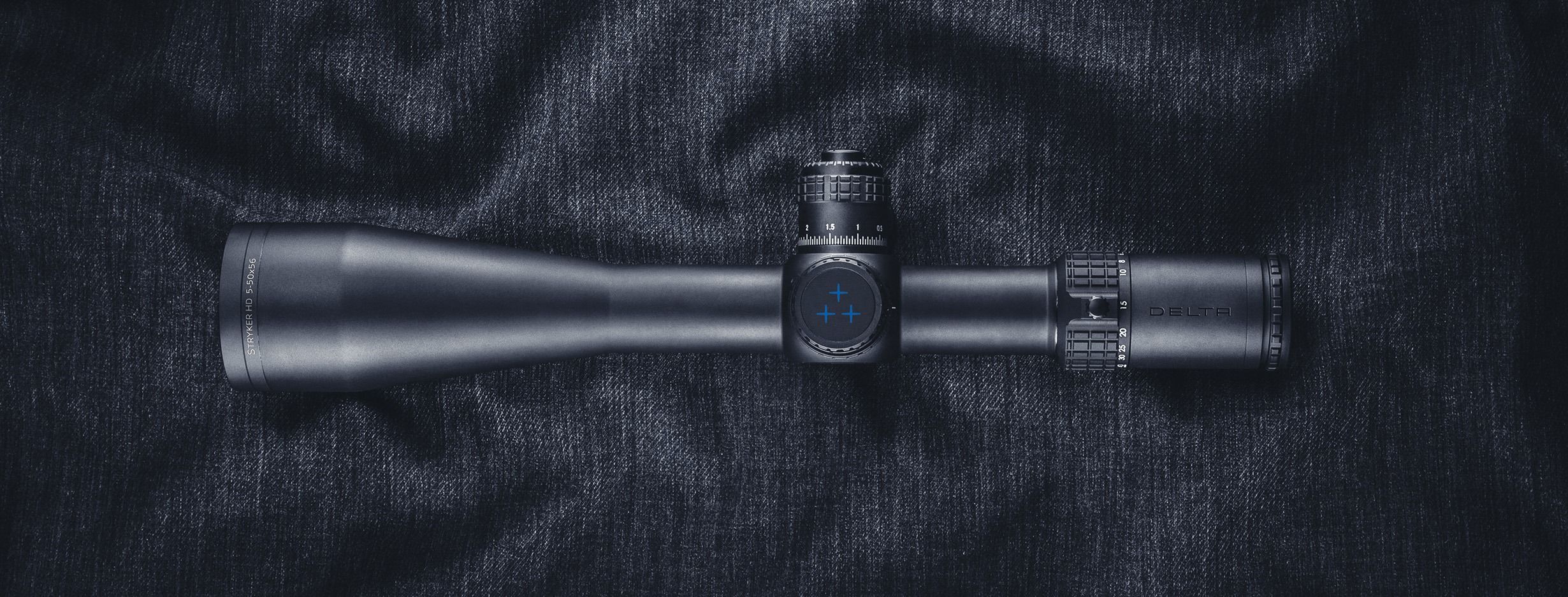
[Image: Delta Stryker HD 5-50x56, Delta Optical]
So apart from the old adage that more expensive usually means better quality, why do I recommend going for a more expensive optic right off the bat?
Well, like many, I started off with a perfectly good but much cheaper scope in my early days learning to shoot on spring Air Rifles, never spending more than £150-250 on what I thought was already a lot to spend on a scope, when surely the rifle was what was important?! After joining a Rifle Club I quickly learned this was not the case and it was a unanimous piece of advice given to me that a really good scope is more important than the rifle providing the rifle is decent. The phrase ‘learn your scope’ is used a lot in the Target Shooting world and it definitely holds weight. So I eventually took this advice on board and went out and spent about £500 on a better scope for my PCP Target Air Rifle. The 'honeymoon period' ended gradually as I shot more and I soon realised that what I had bought wasn’t really an ‘expensive’ scope at all but rather just one that was more expensive than what I had. The glass had improved somewhat and so had the reticle but in hindsight, that was about it. It was very dark on higher magnifications and the turrets had a lot of slop in them, I also struggled to find the reticle I really wanted within my limited budget so I had to make compromises on that front too.
Over time I got to try other more premium scopes and it dawned on me just how much money I had wasted over the years on optics, not to mention the hours of time spent researching the various cheaper scopes I had bought for my rifles. Throw in the cost of all the scope rings and mounts too and it all adds up very fast! At that point in my shooting career, I would have spent at least £2500 on various cheaper optics and rings for my rifles and I am sure it's similar or even more for a lot of you too. Eventually, I couldn’t help but think I could have just got one of these really good scopes much earlier than I would have loved and used that on all my rifles. Instead, I now had a collection of scopes where every aspect of each one was different and to be honest they were all lacking in some way or another for someone getting into competitive shooting.
Not only would I have saved a lot of time and money but I would have really learned to use that one scope well and would have improved much faster as a shooter if I had spent the money on a premium optic in the first place. The availability of one-piece quick-detach mounts like the American Defence series makes it incredibly easy to run 1 or 2 scopes on multiple rifles with no effort required, and it’s also far easier on the pocket only having to buy a new picatinny rail for every new rifle in your collection rather than a new scope and rings every time.
Some examples of scopes that stood out to me that I got to play around with were ones like the Vortex Razors, Sightron S3s, some of the Nightforce range and a Nikko Stirling Diamond, but I always try and have a go with as many different optics as I can before I buy. I should mention that some of the models in these companies' ranges cost upwards of £4000 so are particularly special scopes. However, despite those models being out of budget for many it never hurts to see what's available and to have something to be able to compare the other scopes you are looking at with as a benchmark if you can.
As expected for the price each of these scopes completely outshone every aspect of the ones I owned. The glass quality, build quality, and fineness of adjustments that came as standard on the turrets were so much better than any of my scopes, and very importantly they were accurate all the way to the limit of their turrets allowing you to stay on target out to long distances. They all had better eye relief, were more forgiving to use and had much finer and sharper reticles with no limit of styles to choose from. The amount of light they let in and the level of detail I could see was so beyond what I expected too, and they didn’t fatigue the eye nearly as much over a longer shoot, which was only something I really noticed after going back to the cheaper glass. As soon as I went back to my scopes they just looked dark and somewhat washed out, there was not nearly as focused an image through them no matter what I did and the turrets felt awful in comparison.
This is where the more premium scopes really start to show what you’re spending your money on and is why I recommend saving up to get one.
I can’t stress enough how the difference in the quality of the glass and the accuracy of the turrets improved my performance as a shooter. Good turrets allow you to make those fine adjustments to dial in your zero perfectly, and you’ll get no slop and a good solid click for each value as you turn, making it harder to dial too far when you are trying to be quick. A zero stop always helps too which they all come with. The quality of the glass and reticles really allows you to see what's happening down the range perfectly, and with a silver-coloured pellet or bullet-like Eley Match/Tennex that reflects light better as they fly, you can easily see your misses by eye and then make quick adjustments as you go. For disciplines like HFT or NRL22UK having the ability to do that is vital as you don’t get a paper target to reference your misses on and if you can’t see where your shot went it's much harder to correct for the next one. I firmly believe a scope should only ever be helping you perform better and not limiting or hindering your shooting in any way, and with that in mind, I recommend you should try to avoid any scope that causes you to have to compromise on what you need to be competitive. For example, you’ll hear of plenty of shooters dropping 2 shots in a row on a PRS style stage simply because they couldn’t quite see where they missed the plate and had to guess. A good optic will definitely give you the edge on that front and could easily save you a few points over the course of a competition.
More about the scope
- Turrets and Adjustment
The Delta Stryker has a very generous 100 MOA of vertical adjustment which allows you to get out to around 150 yards with a 0 MOA scope base, so it covers all 3 of the main .22lr Benchrest competition distances of 25, 50, and 100yards. It also has 50MOA of horizontal adjustment. With the right scope base/mount setup and calibre, there is more than enough adjustment to get you anywhere out to 1000yards for all you fullbore or long distance 22LR shooters too. For example, I am able to get out to 400yards easily with a 40MOA scope base with a subsonic .22lr round.
Adjustment was a big deciding factor for me in going with the Delta Stryker Target Ultra ED 5-50x56 HD SFP and indeed the accuracy of the turrets is one of the main 2 reasons to go for any expensive optic over a cheap one in my opinion. Having the very fine 0.05MRAD adjustments really helps get the centre dot on the DLS-1 reticle perfectly in the centre X and you just don’t see that level of fine adjustment on many scopes at all at any price. Importantly, you can dial the Delta Stryker out to its turret limits in any direction and it still maintains click accuracy across its full range. The turrets are locking and have a zero stop too that is easy to set with plenty of instructional videos online to help. Each click is solid and easy to feel as you dial round and the markings are very clear; the large white on black text makes it easy to read. Locking and unlocking the turrets for adjustment is done by hand with no tools and also feels very solid, there is no chance of them moving once you lock them down in place. It takes a decent bit of grip to get them to lift and relock to make adjustments which I like. They are also easy to adjust with gloves on thanks to the machined ‘grips’ on the top of turrets.
- Glass and Reticle
The Delta Stryker has a parallax range of 10 yards to infinity, a magnification range of 5-50x, and an illuminated centre dot if you find yourself shooting in low light. The Japanese ED/HD glass system is lovely and it lets in loads of light combined with the 56mm objective generating a very clear and crisp sight picture that is very easy on the eye and not fatiguing at all. If you are into Benchrest or Target Shooting you may have found that many shooters (including myself) like to use higher magnifications than in other disciplines with many shooting between 30-50x magnification. With all scopes the closer you get to full magnification the darker the sight picture becomes, this has always caused me issues as a Benchrest shooter with cheaper scopes as I like to shoot on around 30-40x magnification if I can. Naturally the more expensive the glass the less of an issue this is and while the Delta Stryker does still suffer from this slightly at 50x mag (and you can see the light difference if you move between 40x and 50x magnification) it is still incredibly clear and bright compared to a cheaper scope and does a very good job at full magnification. At 30x or 40x it’s as bright and clear as any of the lower magnification values which is a big plus to the Delta Stryker as I think 50x is a bit too much zoom for most so they hit the sweet spot on that front. You really can read the small print at 50yards with this thing!
A criticism of the illuminated reticle is that I find the centre dot illumination to be kind of ‘messy’ compared to the reticle marking itself, and turning it on causes the centre dot to look more like a slightly fuzzy tiny line than the perfect centre dot you become used to seeing. Another point to consider here is that the reticle is very fine and some may find it hard to see especially if you wear glasses or if you are perhaps a more senior shooter. I like it a lot but from a few of the people I have let test mine, I can say that the very fine DLS-1 reticle is not for everyone. Personally, I find it clean, simple and perfect for Benchrest, and the DLS-2 is very similar but has some number markings added to it as well. Remember these are the SFP reticles and the FFP ones come with much more on them.
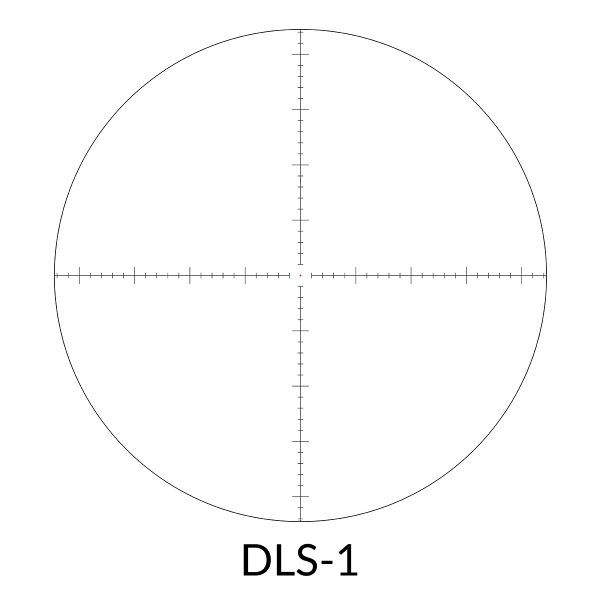
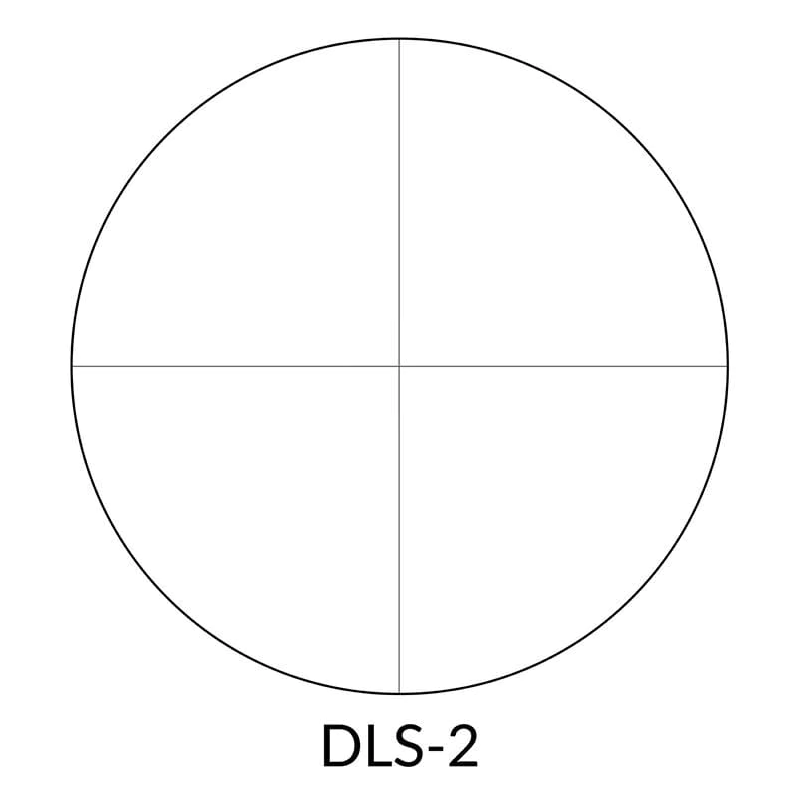
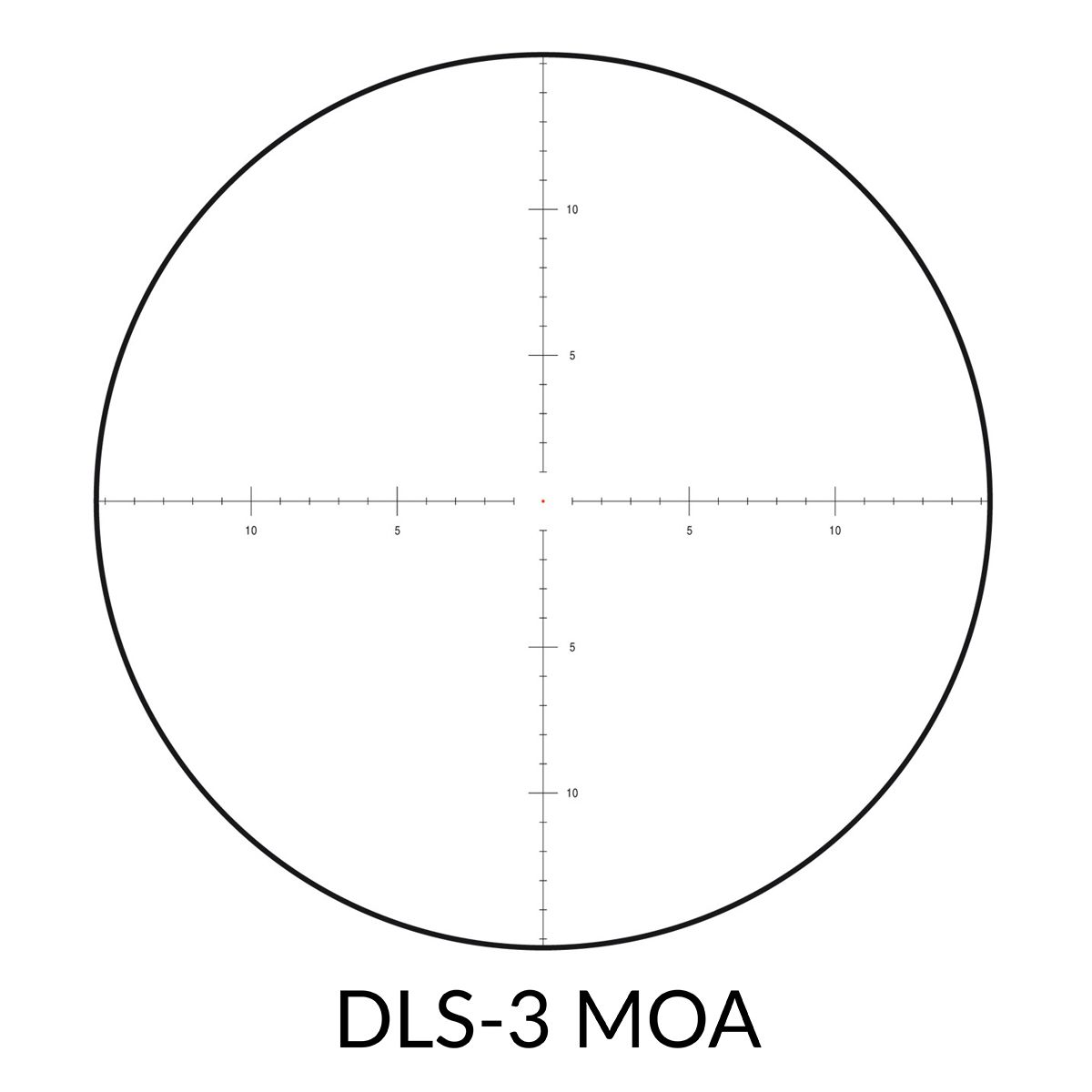
[Images courtesy of Delta Optical]
- Click Values
Finally, the click value of the Delta Ultra ED turrets is 0.1 MIL, which is paired with the milliradian based reticles of the Delta Ultra ED DLS-1 and DLS-2. The reticles on the Delta Stryker have been designed to correspond with the click of the scope so that 1 click = 0.05MIL (5mm) which for me is much less brainpower to use.
Summary
As you can tell I have become a big fan of the Delta Stryker Target Ultra and since purchasing one I can safely say that thanks to my time with it I will now never buy another cheap scope again.
Some will accuse me of becoming a scope snob and they may be right but I see it as having learned my lessons the hard way. My attitude towards scopes has changed now to that anything below £1000 is just not worth buying new if you expect a really good quality scope package. There will, however, be compromises to make. While the ones below that price are perfectly fine and will get the job done (I own several), you need to step up your spend if you really want to get the most out of your rifle, especially at longer distances in any shooting discipline.
So if like me you are stepping into the world of more expensive optics but still have to budget as so many do right now, I would recommend the Delta Stryker as one of the very few almost goldilocks’esque scopes out there. It has all the right features at just about the right price point, and performs as well as competitors that retail for considerably more.
I hope what I’ve shared will get you to consider saving up a bit longer and not getting that cheaper scope you’ve been looking at. Hold out for something higher quality that will put a big smile on your face and actually help you improve your shooting, and that you can move onto any of your other rifles as you get more into the hobby rather than having to waste money upgrading your scopes gradually as you go. It can feel like a big financial jump at first but I haven’t looked back since dipping my toes in and I am sure you won’t regret it either.
Happy shooting!
By Max Gale














